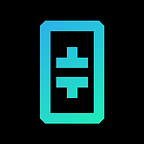Theta Protocol in Smart TVs — the next step in global video and data delivery
We’ve put a lot of thought into how to navigate our way towards onboarding a critical volume of nodes contributing in the Theta Network to power all types of data delivery, starting from video data first, and eventually expanding into general data types. A key focus has been the fast-growing Smart TV market from leading manufacturers like Samsung Electronics, LG Electronics, Sony, Hisense, TCL, Panasonic, Visio, and others.
Smart TVs, internet-enabled TVs that offer a variety of streaming services and other apps, have become the dominant type of new TV sales. Smart TVs represented 67% of all TVs sold in 2018, totaling 157M TVs in all. These TVs run on operating systems like, in order of current market share, Tizen (Samsung), Android, webOS (LG), RokuOS, and FireTV (Amazon).
Over 150 million Americans used connected TVs as of 2016, a number which is expected to increase to nearly 200 million by 2021 and in the majority of households. For the Theta protocol to achieve mass adoption, it’s critical that Theta can simply and effectively integrate with major Smart TVs and their apps. To that end, our first Theta integration with Smart TVs focuses on TVs running on Android and Samsung’s Tizen operating system.
To give a quick glimpse into what we’ve done in terms of integration, we made a number of low-level protocol modifications to our Android Mobile SDK to port Theta to operate on Android TV OS and soon on Samsung Tizen. In the video, we show our test area and a number of TVs and TV set top boxes running Theta on a SLIVER.tv stream. The outputted logs provide some insight into the processing that happens on the device, allowing it to be a functioning node in the Theta Network. Testing with actual hardware from our partners we work with allows us to shift away from hypothetical scenarios and demonstrate actual working results. We’re able to go from saying Theta works on smart TVs and TV boxes to Theta runs on the latest Sony Bravia TV and the LG U+ set top box. And that is how we get market adoption, at scale.
Because the hardware in these smart TVs and TV set top boxes are specifically designed for video streaming, integrating Theta to augment some of the applications for operating in a mesh network was a logical step to take. Most TVs these days are basically mini computers and can handle all types of entertainment uses the average person may use a computer for: browsing the internet, watching movies, or even playing games. It’s now standard for TVs to come with at least 2GB of RAM, 1.5–2GHz of CPU with quadcore or octacore processors, and at least 16GB of local storage disc space. Not to mention, the custom-made processors that are manufactured specifically to support rendering crisp 4K or 8K picture quality. And because the Theta native core is not compute-intensive, running it on TVs with these specs is totally seamless. TVs become relay nodes that are effectively on the edge of the edge network, and onboarding hundreds of thousands to millions of these devices could significantly bolster Theta’s network capacity.
We’re currently working on the first example of a consumer Smart TV app that can relay video content over the Theta Network, and will be revealing more about this in the near future. Needless to say, it’s a big step toward our vision of 100s of millions of connected devices worldwide participating in Theta’s decentralized data delivery network, and earning TFUEL for their network contributions. Stay tuned for more updates soon and more opportunities to get involved and contribute to the Theta Network.
